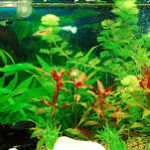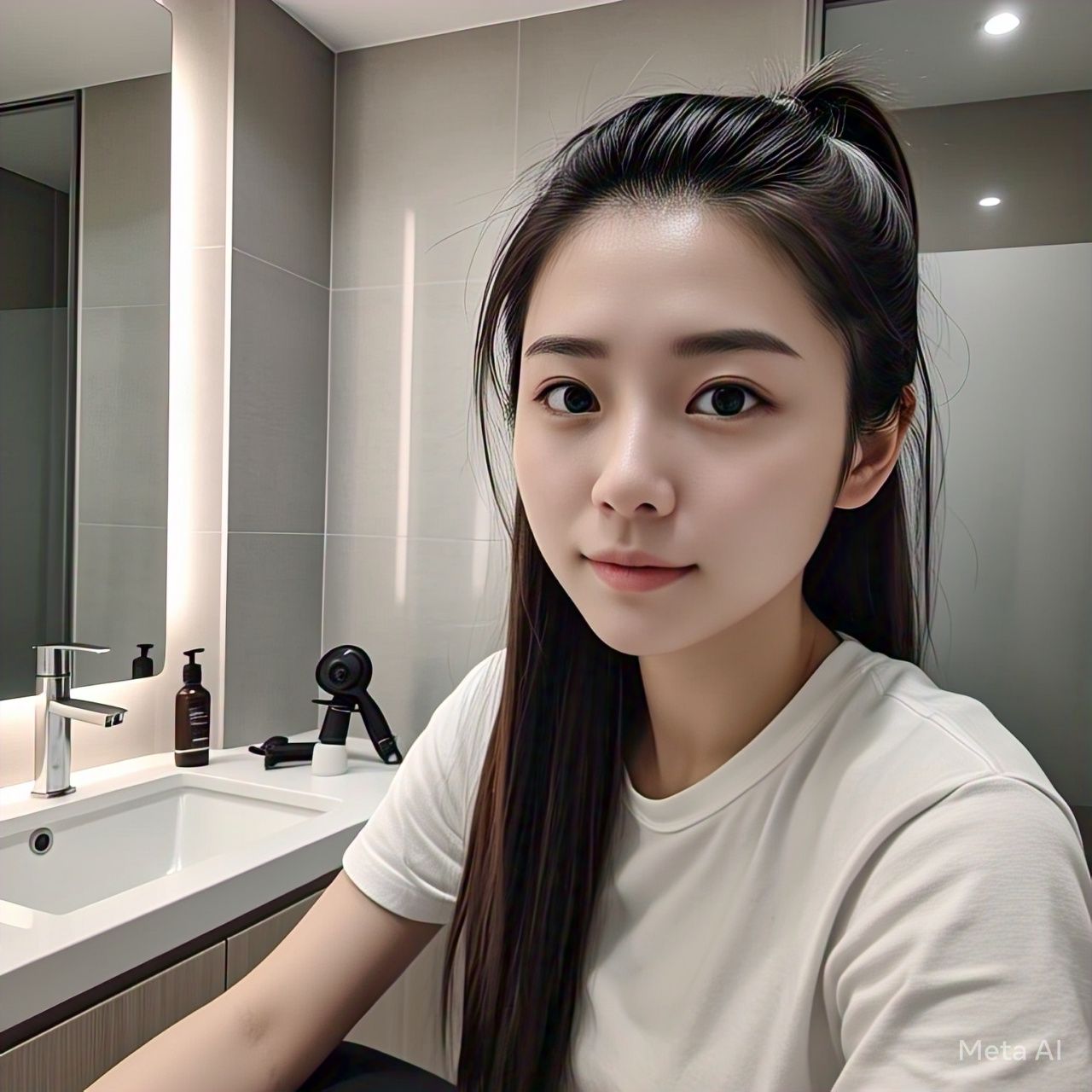Understanding the Challenges for Long Asian Hair
Long Asian hair is admired for its sleek, shiny, and strong texture. However, maintaining its beauty requires special care, especially when facing environmental stressors like humidity, heat, and urban pollution. These factors can cause frizz, dryness, breakage, and dullness, making it essential to adopt a proper hair care routine.
The Impact of Humidity on Asian Hair
Humidity is one of the biggest enemies of long, straight Asian hair. When moisture levels in the air rise, hair strands absorb excess water, causing the cuticles to swell. This leads to frizz, loss of smoothness, and an overall unruly appearance. Unlike curly or coily hair types, which may benefit from some humidity, straight Asian hair often becomes puffy and difficult to manage.
The science behind this lies in the hair’s hydrogen bonds. These bonds break when exposed to moisture, altering the hair’s natural structure. For those living in tropical or highly humid climates, this can be a daily struggle. Without proper protection, hair may lose its sleekness and become prone to tangling.
How Heat Damages Long Asian Hair
Heat styling tools like flat irons, curling wands, and blow dryers are common in many hair care routines. However, excessive heat weakens the hair’s protein structure, leading to split ends, brittleness, and breakage. Asian hair, although naturally strong, is not immune to heat damage.
High temperatures strip away natural oils, leaving hair dehydrated. Over time, repeated heat exposure can cause permanent damage, making hair look dull and lifeless. Even environmental heat, such as prolonged sun exposure, can contribute to dryness and color fading, particularly for those with dyed or chemically treated hair.
The Effects of Urban Pollution on Hair Health
Urban environments expose hair to various pollutants, including smoke, dust, and toxic chemicals. These particles cling to the scalp and hair, leading to buildup that can clog follicles and weaken strands. Pollution also generates free radicals, which damage hair proteins and lipids, accelerating aging and hair thinning.
For individuals with long Asian hair, pollution can be especially problematic because the hair’s length increases its exposure to harmful elements. Over time, this can result in scalp irritation, excessive oiliness, or dryness, and an overall lack of shine.
Why a Customized Hair Care Routine is Essential
Given these challenges, a one-size-fits-all approach to hair care will not suffice. Long Asian hair requires targeted solutions to combat humidity, heat, and pollution effectively. The right products, protective styling techniques, and lifestyle adjustments can make a significant difference in maintaining healthy, beautiful hair.
Choosing the Right Hair Care Products
Selecting the appropriate hair care products is crucial for protecting long Asian hair from humidity, heat, and pollution. Not all shampoos, conditioners, and treatments are created equal—some may even worsen the problem. Understanding key ingredients and formulations can help in making informed choices.
Shampoos for Humidity and Pollution Protection
A good shampoo should cleanse without stripping natural oils. For those battling humidity, sulfate-free shampoos with hydrating ingredients like glycerin and hyaluronic acid help maintain moisture balance. Meanwhile, shampoos with antioxidants like vitamin E or green tea extract can neutralize pollution-induced free radicals.
Clarifying shampoos are useful for removing product buildup and pollutants but should be used sparingly—no more than once a week—to prevent excessive dryness. For daily use, a gentle, pH-balanced shampoo is ideal for keeping the scalp clean without causing irritation.
Conditioners and Hair Masks for Deep Hydration
Conditioners play a vital role in sealing moisture and smoothing the hair cuticle. Silicone-based conditioners can provide a protective barrier against humidity, reducing frizz. However, those concerned about silicone buildup may opt for natural alternatives like argan oil or shea butter.
For deeper repair, weekly hair masks with proteins (keratin, collagen) or natural oils (coconut, jojoba) can restore strength and elasticity. These treatments are particularly beneficial for heat-damaged hair, as they replenish lost nutrients and improve texture.
Heat Protectants and Leave-In Treatments
Before using any heat styling tools, applying a heat protectant is non-negotiable. These products form a shield around the hair, minimizing direct heat exposure. Look for sprays or serums containing dimethicone, cyclomethicone, or natural oils like grapeseed, which can withstand high temperatures.
Leave-in conditioners also offer ongoing protection against humidity and pollution. Lightweight formulas with UV filters can prevent sun damage, while those with anti-humectant properties (like polyquaternium-55) help resist moisture absorption.
Serums and Oils for Smoothing and Shine
Hair serums and oils can provide an extra layer of defense. Silicone serums are excellent for taming frizz and adding shine, while natural oils like argan or camellia oil offer nourishment without weighing hair down. A few drops applied to the mid-lengths and ends can keep hair sleek and manageable throughout the day.
Avoiding Harmful Ingredients
Some ingredients can exacerbate hair problems. Alcohol-based products can dry out hair, while heavy waxes may cause buildup, making hair appear greasy. Sulfates, though effective cleansers, can be too harsh for frequent use, especially on chemically treated hair. Reading labels and opting for gentle, nourishing formulations is key.
Protective Hairstyles and Styling Techniques
Beyond products, the way hair is styled plays a significant role in protecting it from humidity, heat, and pollution. Certain hairstyles and techniques can reduce exposure to damaging elements while keeping hair looking its best.
Low-Manipulation Hairstyles for Humidity Control
Tight ponytails and buns may seem like a quick fix, but they can cause tension and breakage. Instead, loose braids, low buns, or half-up styles are gentler options. These styles keep hair contained without excessive pulling, reducing frizz caused by humidity.
For those with very long hair, a loose braid or twist can prevent tangling and minimize friction, which is especially useful in windy or polluted environments. Silk or satin scrunchies are preferable to elastic bands, as they reduce snagging and breakage.
Heat-Free Styling Alternatives
Reducing heat styling is one of the best ways to prevent damage. Air-drying is the healthiest option, but if time is limited, using a microfiber towel to blot excess water can speed up the process without roughing up the cuticle.
For those who prefer straight or wavy hair, heatless methods like overnight braiding or using foam rollers can create beautiful styles without thermal damage. Silk pillowcases also help maintain smoothness and reduce friction while sleeping.
Protective Coverings for Pollution and Sun Exposure
In highly polluted areas, covering hair with a scarf or hat can shield it from harmful particles. Wide-brimmed hats not only protect against UV rays but also reduce exposure to dust and smoke. For added protection, a light mist of a UV-protectant spray can be applied before heading outdoors.
Avoiding Overwashing and Overbrushing
Frequent washing can strip natural oils, making hair more vulnerable to humidity and pollution. Instead, dry shampoo can be used between washes to absorb excess oil without harsh cleansing.
Overbrushing, especially when hair is wet, can lead to breakage. A wide-tooth comb is gentler for detangling, starting from the ends and working upward to minimize stress on the strands.
Long-Term Hair Care Habits and Lifestyle Adjustments
Sustainable hair care goes beyond products and styling—it involves daily habits, diet, and overall wellness. Protecting long Asian hair from environmental damage requires a holistic approach.
Nutrition for Strong, Healthy Hair
Hair health starts from within. A diet rich in protein, vitamins (especially biotin, vitamin E, and omega-3s), and minerals like iron and zinc supports hair growth and strength. Foods like eggs, nuts, leafy greens, and fatty fish contribute to shiny, resilient hair.
Hydration is equally important. Drinking enough water ensures that hair stays moisturized from the inside out, reducing dryness and brittleness.
Scalp Care for Optimal Hair Growth
A healthy scalp is the foundation of beautiful hair. Regular scalp massages stimulate blood circulation, promoting growth. Using a mild exfoliating scrub once a week can remove dead skin cells and prevent clogged follicles.
Avoiding heavy styling products near the roots can also prevent buildup, which can lead to irritation and hair thinning.
Stress Management and Hair Health
Stress is a major contributor to hair loss and damage. Practices like meditation, yoga, or regular exercise can reduce stress levels, indirectly benefiting hair health. Ensuring adequate sleep also allows the body to repair and regenerate hair cells.
Regular Trims and Professional Treatments
Even with the best care, split ends are inevitable. Scheduling regular trims every 8-12 weeks prevents further damage from traveling up the hair shaft.
For those with severely damaged hair, professional treatments like keratin therapy or deep conditioning salon services can restore vitality.
Final Thoughts on Maintaining Beautiful Hair
Long Asian hair is stunning but requires dedicated care to withstand humidity, heat, and pollution. By choosing the right products, adopting protective styling techniques, and maintaining healthy lifestyle habits, it’s possible to keep hair strong, smooth, and radiant.
Consistency is key—small, daily efforts lead to long-term results. With the right approach, anyone can enjoy the beauty of their long locks without compromising health or style.










